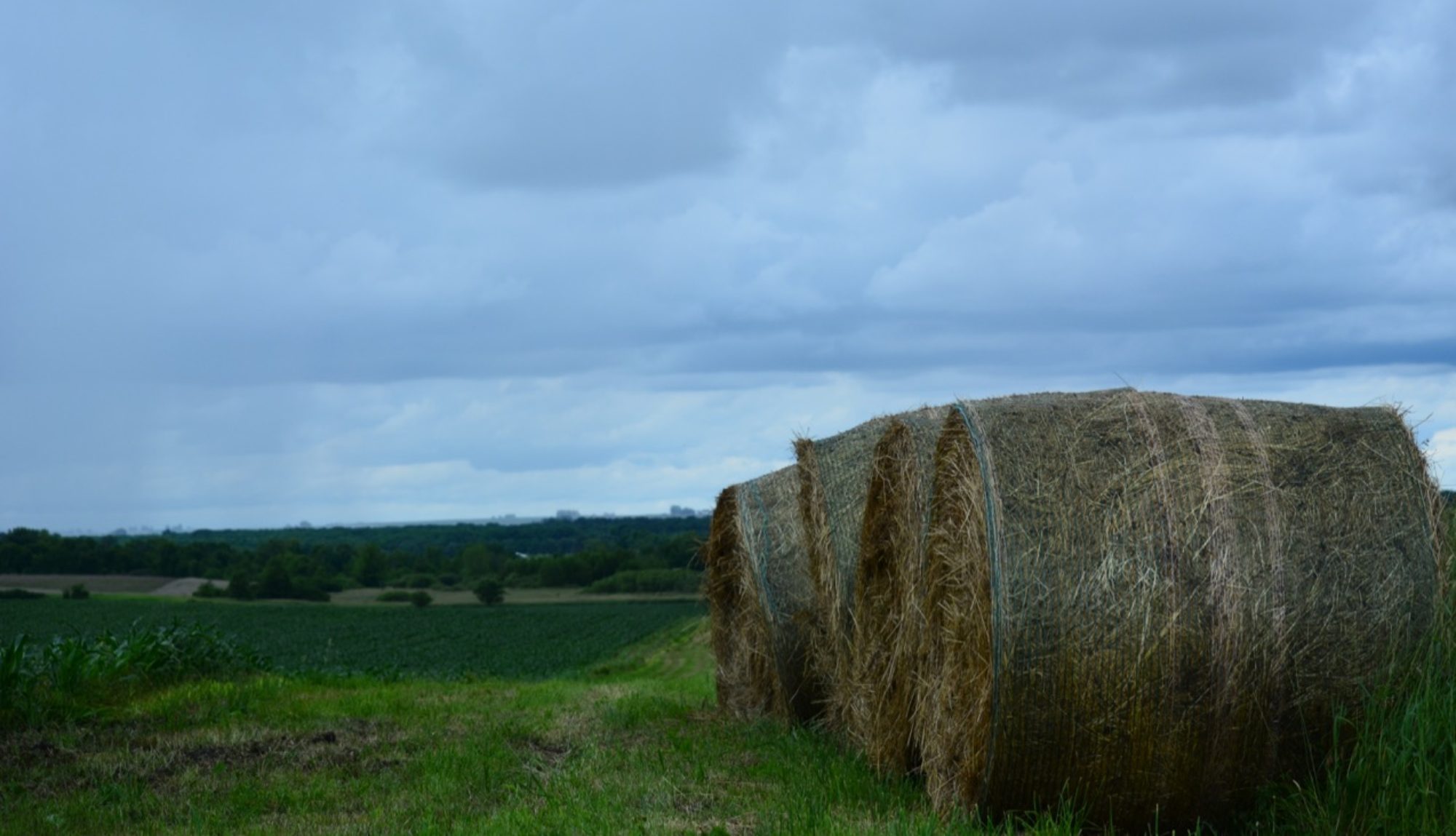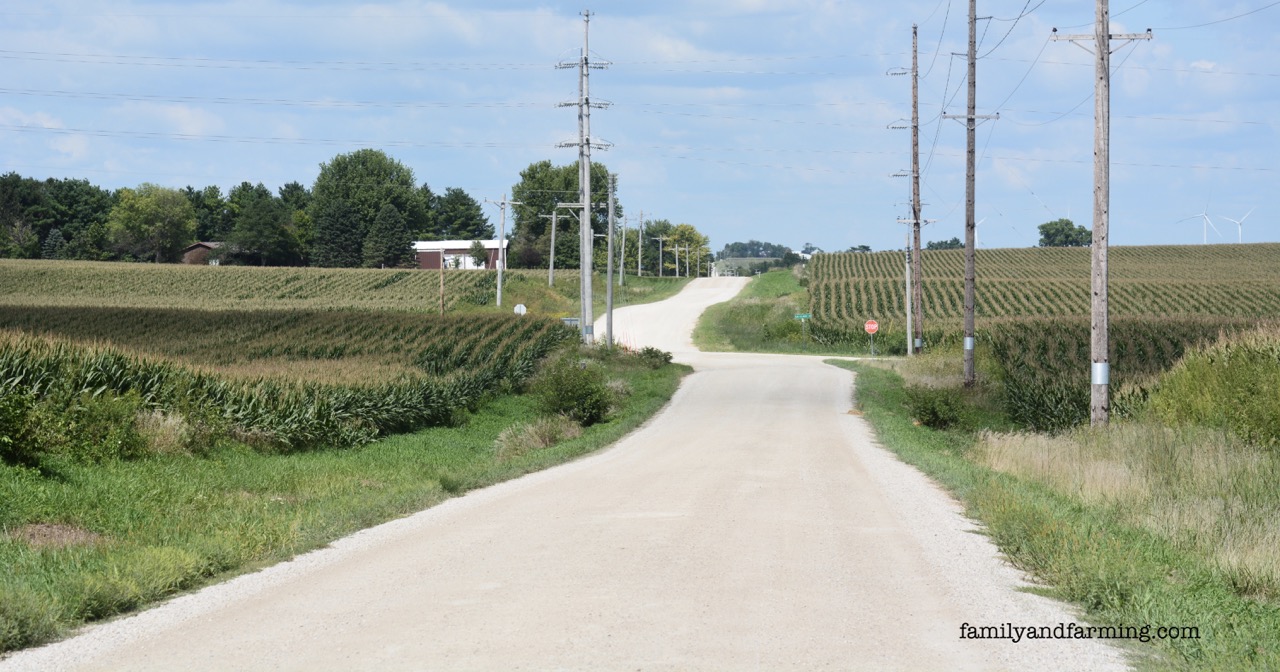If you drive on country roads, you are probably aware of the dangers ahead. If you’ve never driven a country road, Fasten Your Seatbelt. It’s Going Be a Bumpy Night!
Some Statistics About Country Roads
The state of Iowa (where we farm) has 235,549 miles of roads. Of those roads, almost 88% of those miles are rural (207,249 miles).
Some of those rural roads are paved. Most are not. They are what we call “Country Roads” or in road speak, Secondary Roads.
The reason Iowa has so many rural road miles is farmers need those country roads to get their commodities to the elevators, grain mills, animal processing plants, egg distributors, rail yards, trucking firms and cereal manufacturers, so you can eat tonight.
Country music has a love affair with country roads. There’s John Denver’s Take Me Home Country Roads, Luke Bryant’s Dirt Road Diary, and Keith Urban’s, Where the Blacktop Ends If you search, you will find that almost every country singer or band has a ballad about country roads.
A song about country roads sounds so heartwarming and nostalgic, but if you don’t watch out, your drive on a country road can turn into AC/DC’s Highway to Hell!
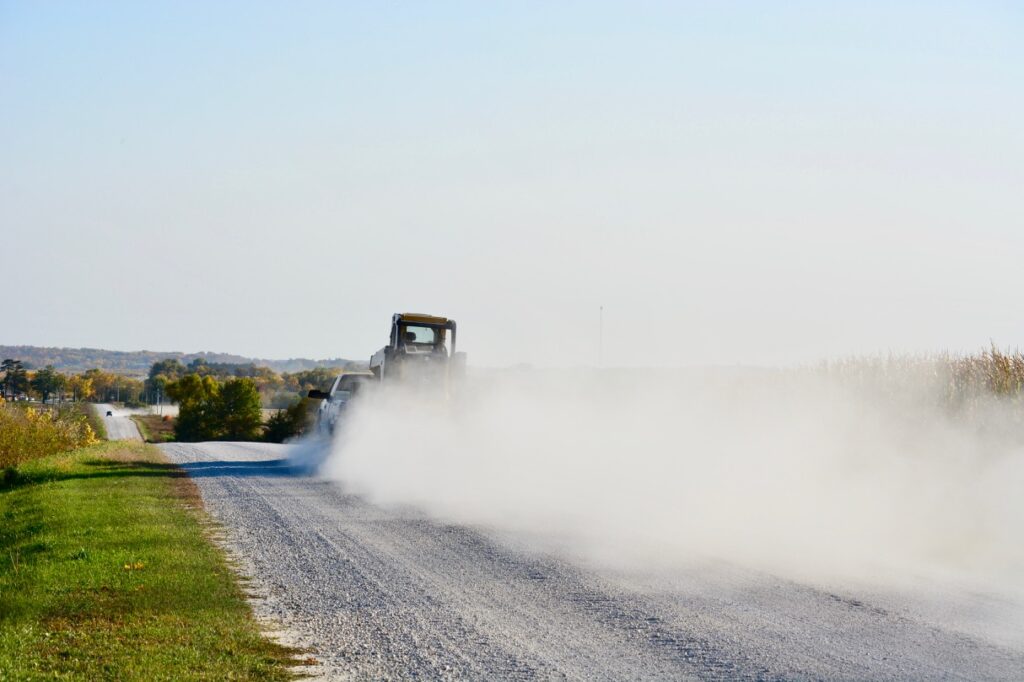
Our Country Roads Are Gravel Roads
I’ve driven dirt roads, but they aren’t the norm in Iowa. Iowa has gravel roads. People around here will call driving gravel roads, “Taking the gravel”. Gravel roads are covered in small limestone rocks. Once a year, in the spring, dump trucks will run up and down our county’s roads with large loads of small limestone rocks that are spread on the road’s surface. This limestone layer is to protect the road from degrading as farmers drive their heavy equipment and large loads of farm commodities up and down these roads.
Gravel roads are cheaper to build and maintain than blacktop or pavement. But they come at a cost of safety. Gravel creates dust clouds that obscure visibility and layers dust on everything it touches. There is always a layer of dust on our farm. You can’t escape this dust when a vehicle speeds by the farm on our gravel road. We have calcium chloride applied on the road in front of our farm in the spring and late summer. It works well, but it doesn’t stop the dust before or after the application area.
Gravel is loose rock, and if you drive too fast, that loose rock will cause drivers to lose control and slide into the ditch. Loose gravel combined with speed and a sharp curve can cause a vehicle to flip and roll over. I won’t discuss the numerous funerals I’ve attended due to the tragedy of loose gravel.
Country Roads Are Narrow Roads
Country roads are narrow, as most were built before farm machinery became ginormous! The average highway is 10 feet wide for each lane, with 6-10 wide shoulders on both sides, for a total of 32-40 feet width shoulder to shoulder. I took a measuring tape and measured the width of the gravel road that runs past our farm. This country road is 25 feet wide TOTAL with no shoulders and deep ditches.
Because there are no shoulders on gravel roads, drivers tend to drift toward the center of the road to avoid rolling into the ditch. Steep hills on gravel roads are especially scary to ascend, as you may meet a vehicle driving in the middle of road behind that blind hill.
Country Roads Are Full of Wide Machinery
While writing this post I can look out my front window toward the road. The following vehicles drove by; 3 combines (most likely farmers getting the machines ready to harvest), 4 tractors with wagons, 2 large pickup trucks with trailers loaded with skid loaders, and a semi.
Secondary roads are designed to move farm commodities, farm machinery, and all of the equipment needed to run a farm. Secondary roads in a farming area are service roads; roads designed to serve the needs of farmers and to help them get their commodities to market so people can eat. But if an unaware driver doesn’t know the country road is full of machinery coming their way, they may be crowded off the road.
Country Roads Have Very Low Visibility at Every Corner
Many times drivers on country roads are lulled into thinking they are the only vehicle on the road and will forget to stop at intersections, and instead roll through. This is a very bad idea.
From mid-summer to fall, if there is a tall crop in the fields, the driver’s view is obscured. With crops surrounding the intersection, there is no visibility to see if there is traffic barreling your way! When I come to a corn-covered intersection, I stop, look both ways up to three times, inch out, and look again and again! I won’t discuss the numerous funerals I’ve attended due to the tragedy of low visibility at corners with or without stop signs.
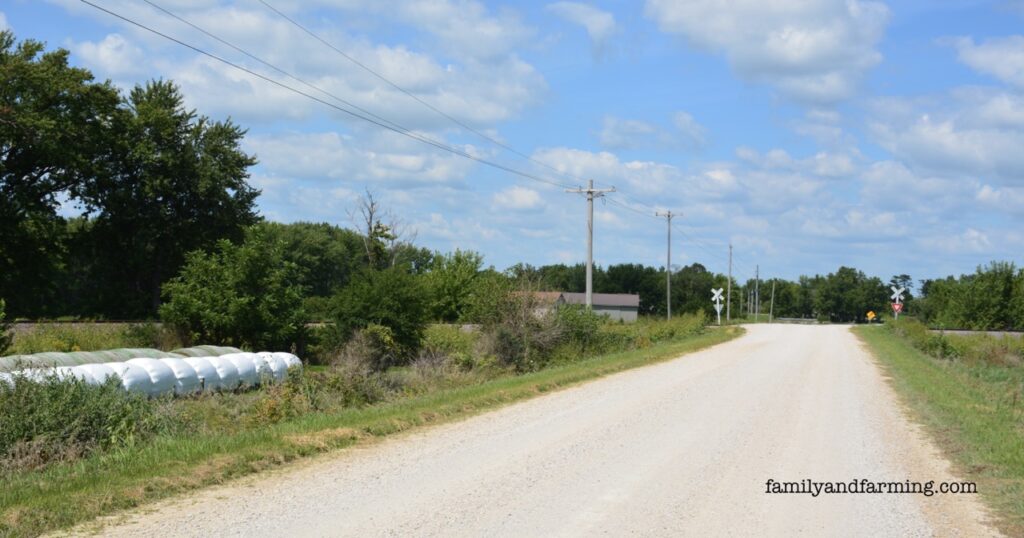
Railroad Crossings Are Very Scary on Country Roads
There’s something more scary than sliding on loose gravel into the ditch. Getting hit by a train! Railroad tracks are a common element crossing secondary roads. Secondary roads tend to not have lights or crossing arms to block a vehicle from a speeding train. What stops you from running into a speeding train? Nothing!
The train that crosses the road a mile from our farm isn’t an Amtrak train. This freight train runs early and late, and never has a schedule. There are trees lining both sides of the tracks, creating limited visibility. The elements of no railroad crossing arms, no train schedule and limited visibility, is a possible recipe for disaster! How do you prevent a possible disaster? You slow down, look both ways multiple times, roll your windows down to hear any sort of train noise, and take your time!
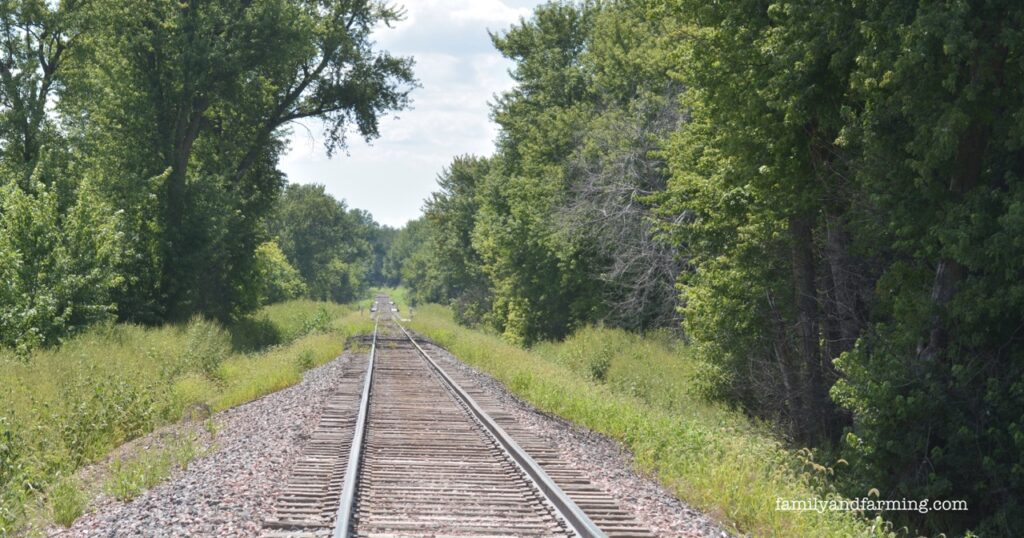
Be Aware When Driving Country Roads
Country roads may look idyllic, but there are hazards that one should be aware of when traversing secondary roads. If you know you need to stop, look and listen, your trips on the country roads should be full of the beauty of the country!
Be Blessed!
Discover more from Family and Farming
Subscribe to get the latest posts sent to your email.
